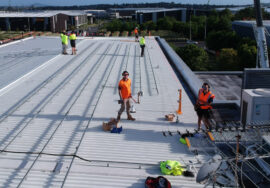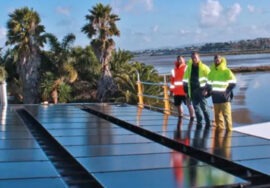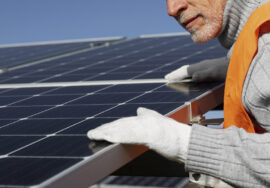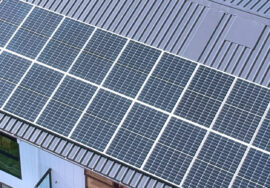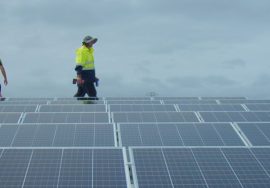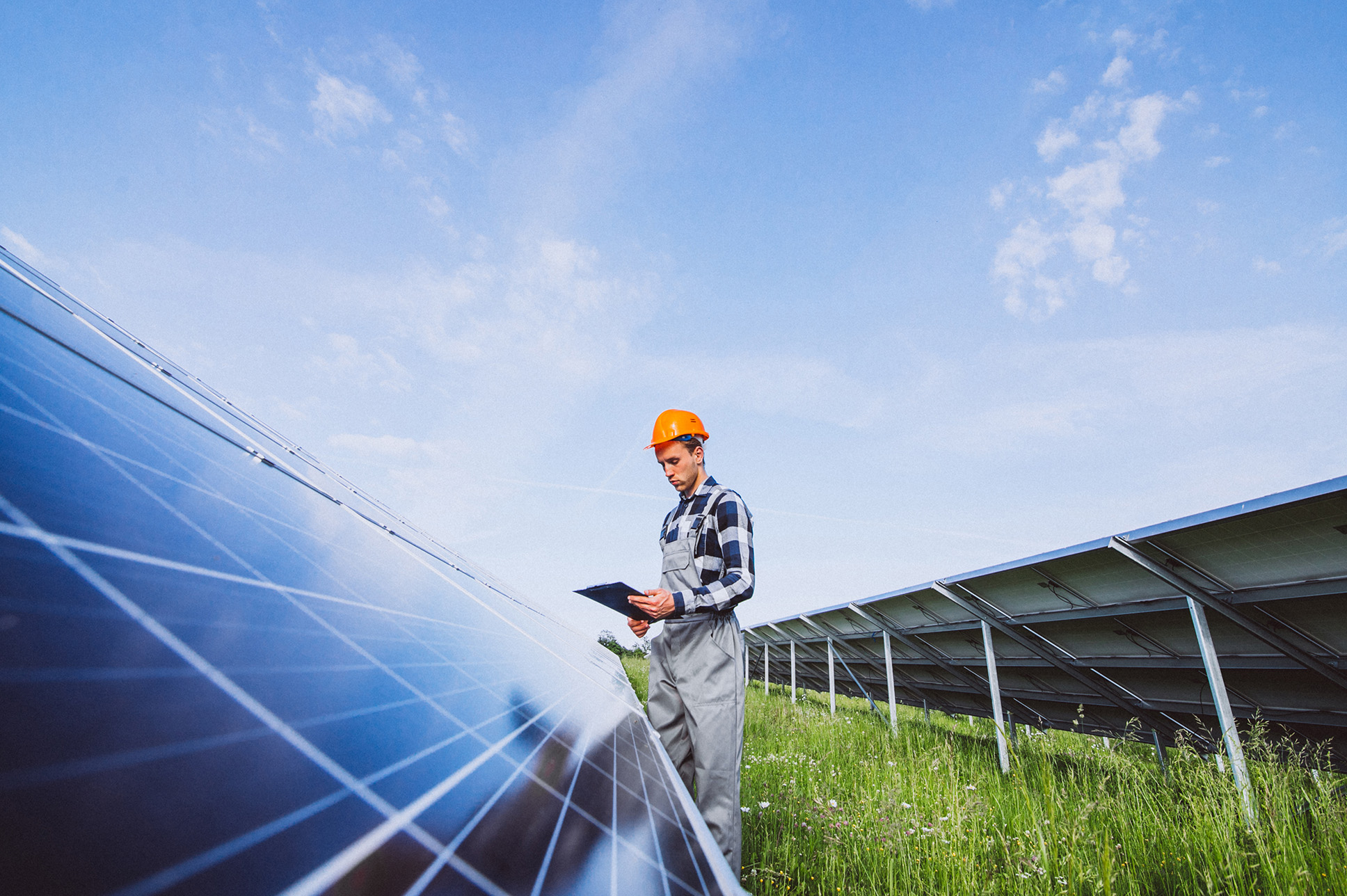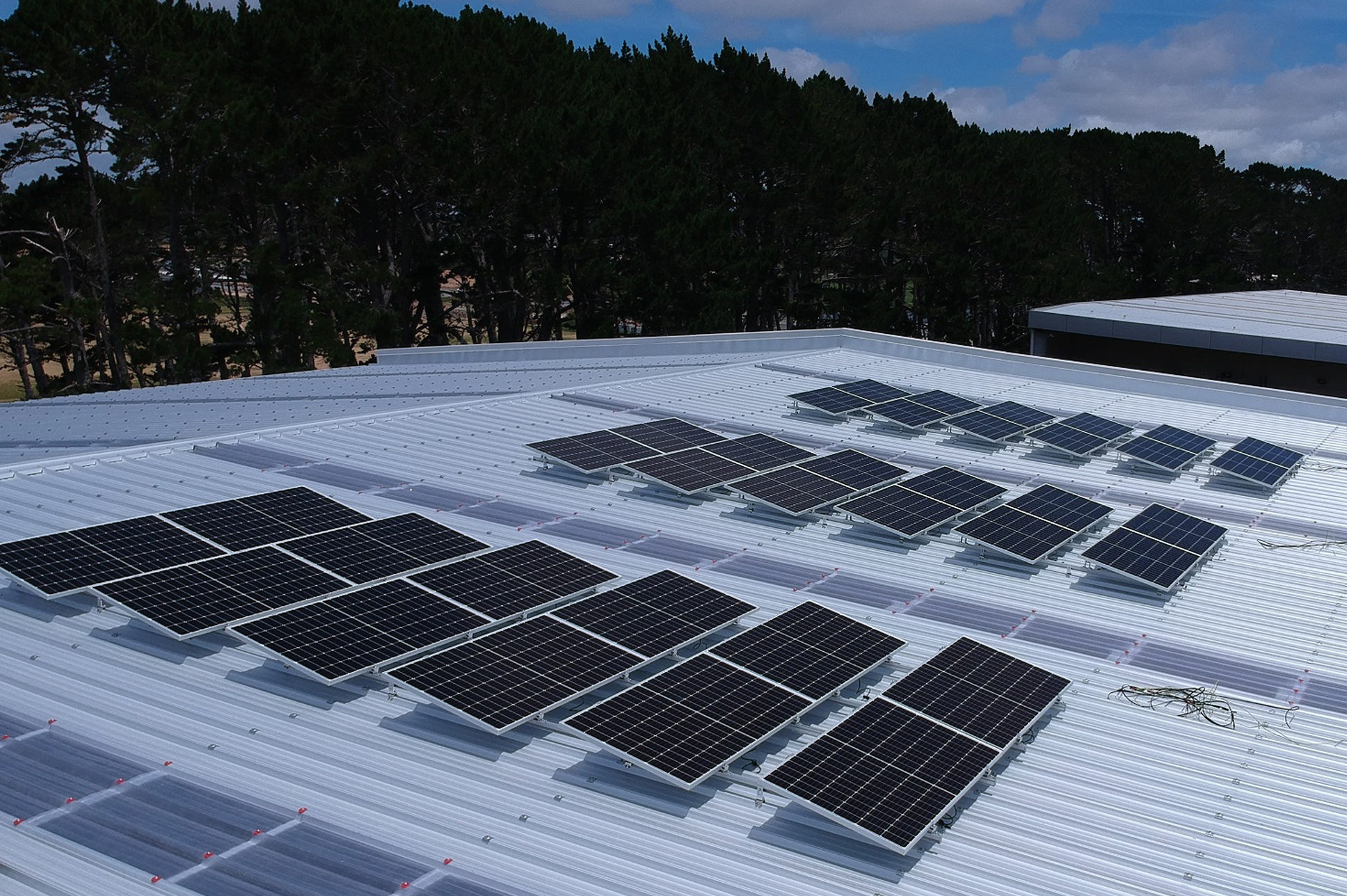
What is Solar Energy and How Does it Work?
Thousands of Kiwi families, individuals and businesses rely on solar for clean, affordable and efficient energy. But what exactly is solar energy and how does it work?
In this article, we dive deeper into the ins and outs of solar power, from PV cells to grids and everything in between.
What is Solar Energy?
Solar energy is just energy that comes from the sun. In this context, it refers to “solar photovoltaic” energy, which is energy generated using a solar panel. You can get solar energy in a number of ways, of course – plants technically work on solar energy, any solar thermal or solar hot water will be solar energy. In the context of Commercial Solar, solar energy is any energy which is generated from a solar panel, which comes directly from light upon striking the panel.
What is a Photovoltaic (PV) Cell?
Photovoltaic panels are devices for generating electricity based on the incidence of electromagnetic radiation, or light. They work by using doped silicon to initiate an electric current.
How Does a PV Cell Work?
Essentially, you have the sun and you have some silicon ‘P-N’ junctions. More broadly, you’ve got a silicon atom and a bunch of electrons floating around the silicon atom. When light is incident on one of these electrons, it injects energy into that electron and can bump it up into a higher energy level. Solar cells are able to leverage this property by using what we refer to as ‘P-N’ junctions.
PV cells are able to leverage this property to take this electron, which is in an excited state, and take it through a circuit and back into the original silicon. The energy will come from the sun, and be incident upon this electron, and this electron goes into an excited state. And because it’s exciting, it has the capability to travel through this circuit. And once you have that, you can use it to do work because the energy that was once carried by the photon that came from the Sun is now carried by the electron and is able to run through any device that you might want in your building.
How Does the Electricity Go From the Panels of the Roof into a Building?
The flow of electricity is very simple. If you consider the inverter to be a black box, it’s extremely simple – it’s generated as DC by the panels, it goes into the inverter, the inverter will convert it to nice 230 – volt, 50 – hertz AC, which is the power which is appropriate for use by the grid.
At that point, on a large commercial solar system, you’ll have a number of inverters. That power will run through what we call a PVDB, or a Grid Protection Unit, which is essentially a little switchboard – you’ll have a number of inverter feeds into this board and this board will combine them into one big cable. It’ll also provide some secondary protection services, which we won’t worry about for now.
Once it’s combined into one big cable, this is now carrying electricity of a kind which is appropriate to be accepted into the grid. So theoretically, anywhere in your house that you can plug in that big cable, would allow you to connect the solar. If you were to plug it into any PowerPoint, just in your house, in theory, that would work fine. In reality, it wouldn’t be big enough.
Now that you have the power, you just need to connect it into the house. The easiest way to do that is in the main switchboard. Commercial property will have a spare breaker spot in the main switchboard. You might have a breaker coming out to power your air conditioning, you might have one coming out for your lighting, you might have one for your hot water. You’ll have a spare there too, so that spare you can connect the solar feed in to and you’re done.
Otherwise, if there were no spares, some modifications to the board would be required, wherein you would essentially make the MSB a little bit larger. You essentially just need to adapt the MSB such that you’re able to take in the solar cable. That can be done in a number of ways – it’s done by a board-builder. And essentially, it’s just the board-builder finding a way to connect that cable into the MSB in a way that’s safe.
How Does Your Building Distinguish Between Solar vs Grid Power?
Your building doesn’t know if it’s working on solar power rather than other power, and it doesn’t matter for any of your appliances because solar energy, and your inverter, are designed to replicate precisely the conditions of the grid. Simply put, your air conditioner works exactly the same on inverted solar power as it will on grid power.
How Do the Grid Know That Solar is Connected into My Building?
Once you have solar, electrons from the solar are powering some of your load and electrons from the grid powering some of your load. But because some of the electrons are coming from the solar, they’re going up into the load and the remainder of the electrons are coming from the grid up into the load, only the remainder of the electrons pass through the meter. And so the meter only captures that current which comes from the grid.
The power which comes from the solar is seen by the meter as a reduction in load, because the meter, now that solar is connected, doesn’t see any load which is offset by the solar. The only other case is where total solar exceeds total load when there’s a case where the power from the solar will power this load and will power this load, and will come back to the transformer and so the meter will see some export.
But in general, in a case where you’re not exporting, it’s just the case that solar powers half your load, the grid powers the other half of the load, the meter, because of where it’s positioned with the way the current flows, only sees the half that’s powered by the grid.
What Happens When the Solar Generates Above the Necessary Load?
Where solar generates above the necessary load, we have the solar producing a huge amount of current, which is going into power load number one, that current is also coming into power load number two, and then there’s too much solar power leftover.
The conservation of current means that it will go back through the meter, to the transformer. And so the meter will capture that, if you have a proper bidirectional meter, the meter will capture the current flow and rather than going up, it will capture that the current flow is going out, and register that current as exported power.
What Will the Grid Do With Exported Power?
For a commercial system, the excess energy will just go back into the grid and you will receive no compensation for that excess energy. Other than a small government environmental benefit from having generated renewable power.
What is Export Limiting?
The export limitation is a system where the total net energy coming into the premises is monitored, and the total solar production is managed such that it never exceeds the total load on-site. Therefore, there is never any energy exported because there’s never more solar than there is load, so there’s never any extra. That’s achieved through an export limiting device, which measures the power coming into the incomer on the property. When the export limiting device detects that the solar system is exporting power, the system is curtailed – that means the inverter will throttle, so it will artificially force the solar panels to work at a sub-optimal point.
Under normal circumstances inverters do what’s called maximum power point tracking, they will cause the solar panels to work at their optimal point. If they receive the throttle command, then they will intentionally diverge from that optimal point, and therefore will cause the system to produce less power than it otherwise would so that it doesn’t export.
To learn how your business can harness cleaner, more affordable and more efficient energy with commercial solar, get in touch with us today.
Also, find out if you are solar suitable by click here.
ABOUT TRILECT SOLAR
Trilect Solar is a division of Trilect Services, New Zealand’s master electrician since 1997.
We are members of the Sustainable Energy Association of New Zealand (SEANZ) which offers additional peace of mind to our customers.
Trilect Electrical Services is a large electrical service company which is a member of the Master Electricians & Mastercraft network with 40 employees and a 20+ years history of customer satisfaction.
Get started now by booking a free on-site consultation.
Request Your On-site Consultation
Or call us on (09) 271 2493

